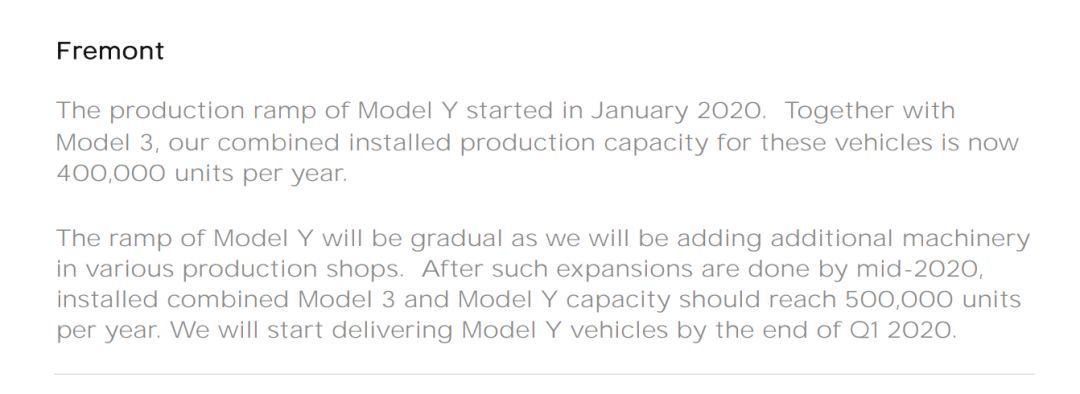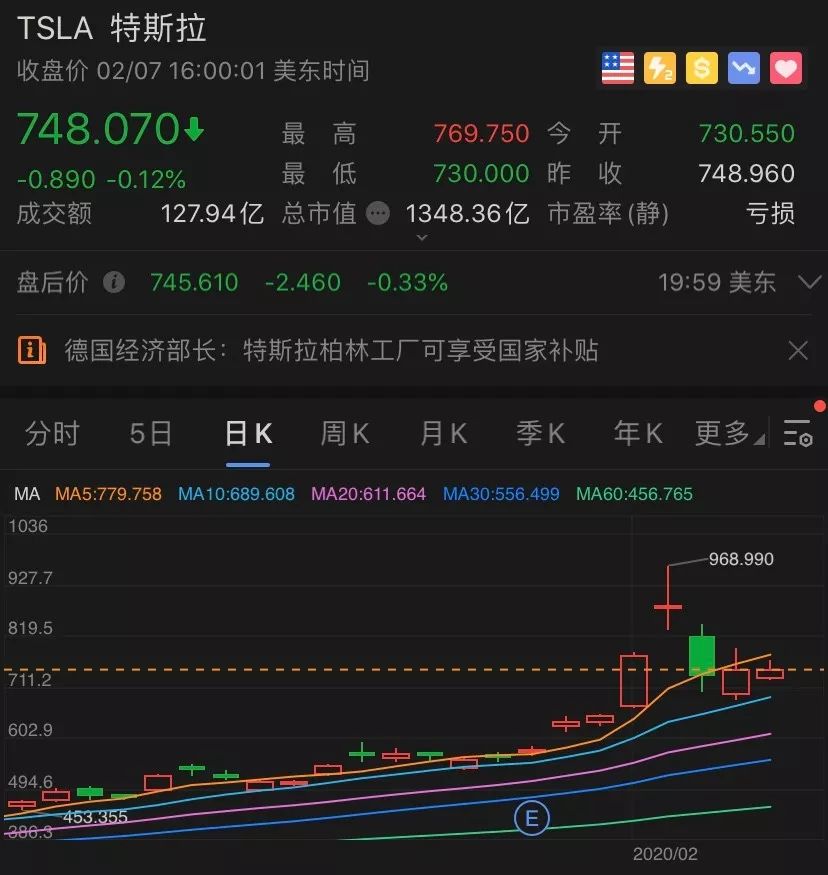On the evening of February 5th, Tesla’s stock fell by 17%, ending its continuous four-day surge.
After looking around for all the information related to Tesla, I couldn’t find any recent positive news that could be related to the rising stock price, so today I will put aside the stock price and talk about something more rational.
How many cars can Tesla sell in 2020?
In the Q4 2019 financial report, Tesla gave a sales guidance of 500,000 vehicles, which is a 36% increase compared to the delivery volume of 367,000 vehicles in 2019. For traditional car companies, this increase is obviously unrealistic, but for Tesla, we believe that 500,000 vehicles is a completely achievable goal.

How can we achieve sales of 500,000 vehicles in 2020? We can look at it from two angles: “production capacity” and “demand“.

How much can Tesla produce in 2020?
According to the data disclosed in the Q4 2019 financial report, Model Y has started production at the Fremont factory in January 2020, and the combined production capacity of Model Y and Model 3 is 400,000 vehicles per year. With the addition of 90,000 units for Model S&X, the total production capacity of Tesla’s Fremont factory is now at 490,000 vehicles.

The financial report also mentioned that the Model Y production line at the Fremont factory will be gradually expanded, and after the expansion is completed in mid-2020, the production capacity of Model 3&Y will reach 500,000 vehicles per year.
 Let’s do some simple calculations. The peak production of Model 3&Y in the first half of 2020 was 200,000 units, and after completing the expansion in the middle of 2020, the peak production capacity in the second half of the year was 250,000 units. This means that the production of Model 3&Y by Fremont factory in 2020 was 450,000 units, plus 90,000 units of Model S&X, giving a total annual output of approximately 540,000 units in 2020 for the Fremont factory.
Let’s do some simple calculations. The peak production of Model 3&Y in the first half of 2020 was 200,000 units, and after completing the expansion in the middle of 2020, the peak production capacity in the second half of the year was 250,000 units. This means that the production of Model 3&Y by Fremont factory in 2020 was 450,000 units, plus 90,000 units of Model S&X, giving a total annual output of approximately 540,000 units in 2020 for the Fremont factory.
The sales volume depends on market demand, and the ceiling of sales is determined by production capacity. Recently, the “medical surgical masks,” which have become hard currency, vividly demonstrate this truth to us.
Tesla, which once won more than 500,000 orders, also knows this truth. In order to break this ceiling, Tesla has successively built Gigafactory 3 and Gigafactory 4 in Shanghai and Berlin, Germany.
Gigafactory 3, which was completed at the end of 2019, will also contribute in 2020.
According to the 2019 Q4 production & delivery data released by Tesla on January 3, 2019, Tesla stated that Shanghai factory had a capacity of 3,000 units/week, and the financial report of Q4 2019 showed that the production capacity of Shanghai factory in 2020 was 150,000 units/year.
Therefore, the total production capacity of the two factories can reach 640,000 units/year in 2020.
By the way, according to the latest news from Shanghai Municipal News Office, Tesla Shanghai factory will resume production on February 10th, and for the difficulties of production resumption of key production companies in Shanghai, the municipal government will make every effort to coordinate and help enterprises to resume production as soon as possible.
If we calculate based on the assumption of half a month of shutdown, the annual output of Tesla’s Shanghai factory can still reach 144,000 units. Even if the subsequent impact continues until May or June, Tesla’s current production capacity can still satisfy the annual demand of 500,000 units without much problem.
However, in order to continue to break through the ceiling of production capacity, more factories will be needed. Currently, Gigafactory 3 Phase 2 and Gigafactory 4 in Germany are under construction.# Gigafactory 3 Phase 2 Plan to Commence Mass Production of Model Y in 2021
Gigafactory 3 Phase 2 plan is to commence mass production of Model Y in 2021, with a production volume not lower than the current Model 3. Similarly, Gigafactory 4 aims to achieve mass production in 2021, with the factory scheduled to commence production in July 2021 according to the documents Tesla submitted to the German Federal Environment Agency. The initial weekly production capacity is also 3000 vehicles/week.
Therefore, within the known scope, Tesla will obtain a production capacity of 300,000 vehicles per year in 2021.
In addition to the four conventional models S3XY, Cybertruck will also be put into production in 2021, facing Cybertruck’s orders exceeding 200,000 units, Elon hinted on Twitter that it will be produced at Giga Texas.

After the ceiling of production capacity has been raised again and again, let’s focus on the demand issue, how many cars can Tesla sell in 2020?
Written By: Liu San
Edited By: Daiji



This article is a translation by ChatGPT of a Chinese report from 42HOW. If you have any questions about it, please email bd@42how.com.


